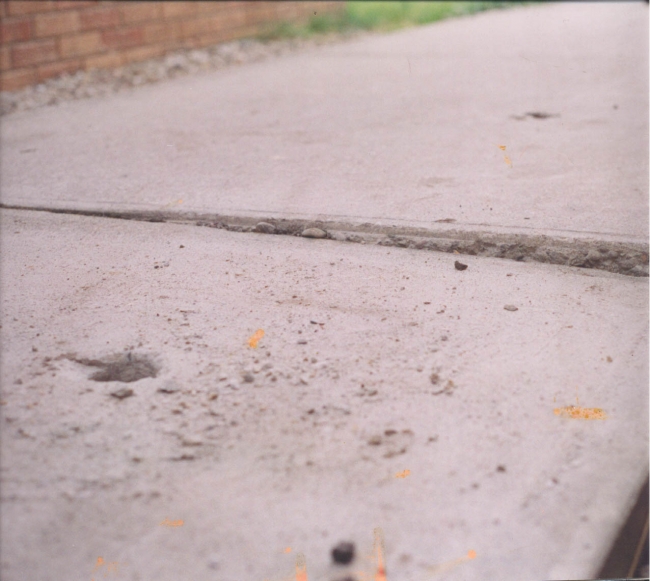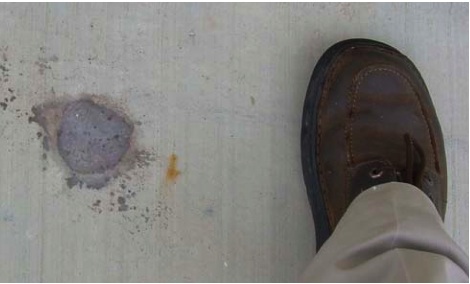There was a time when the only remedy for sinking sidewalks or uneven foundations was to tear out the old pavement slab and pour a new one, and spend a great deal of time and money in the process. Today, a less intensive alternative known as mudjacking (also called concrete leveling, pressure grouting or slabjacking) pumps
 slurry beneath a sunken concrete slab in order to raise it back into place.
slurry beneath a sunken concrete slab in order to raise it back into place.
While this is not a complicated procedure, it should be performed only by a trained professional, as amateur workmanship may cause even more extensive damage. Drain pipes, sewers and utilities must be located and avoided, and the area must be evaluated as to whether it can survive the mudjacking process.

- efficiency. Mudjacking requires less equipment and fewer workers. Adjacent plants and landscaping are also disturbed less, as are neighbors, tenants and passersby by the loud noise, dust and cumbersome equipment;
- price. Mudjacking typically costs roughly half as much as concrete replacement because there is little need for new cement or the removal of old concrete. The overall cost is based on the area of concrete that must be lifted, which may be as little as $5 per foot. Thus, for a 5x4-foot job, it might cost just $60, although the mudjacker may charge more if the area is in a hard-to-reach location;
- speed. Mudjacking takes hours, while certain concrete pours may take days; and
- environmentally friendly. Mudjacking makes use of perfectly good concrete, which would otherwise be sent to a landfill.
- The concrete surface is spalling or otherwise damaged. The mudjacking process might further damage the surface, which will still be defective even after it’s raised back into place.
- The concrete has risen, caused by expansive soil. The only solution for this defect is to re-pour the cement.
- The cause of the settling is not addressed. If the soil has settled due to some external factor, the problem must be fixed or the soil will sink again in the future. For instance, a gutter downspout that drains onto a concrete edge must be corrected in order to avoid the need for future repair.
- The underlying soil is swampy.
- There is a sinkhole beneath the concrete.



